Traveling the world and experiencing food from different cultures is a passion worth celebrating. When asked to list foods that start with I, a few common ones (namely a delicious treat) come to mind.
In this article, we’ll cover 19 interesting foods that start with I, including a few well-known dishes and some new, exciting things to try from around the world.
Iberico Ham

Iberico ham is a delicacy that comes with a price.
©joseluisserranoariza/Shutterstock.com
Also known as Jamón ibérico or Iberian ham, this delicacy comes from Portugal and Spain. The meat comes from the Black Iberian Pig, which consumes a natural diet, contributing to its nutty, earthy flavor. When processed, Iberian ham is similar in appearance and texture to prosciutto, though it boasts a richer flavor.
Iberico ham was illegal in the United States until the early 2000s due to import restrictions. Now, sourcing authentic Iberico ham is less challenging but comes at a price; you may pay over $1000 for a leg.
Icaco
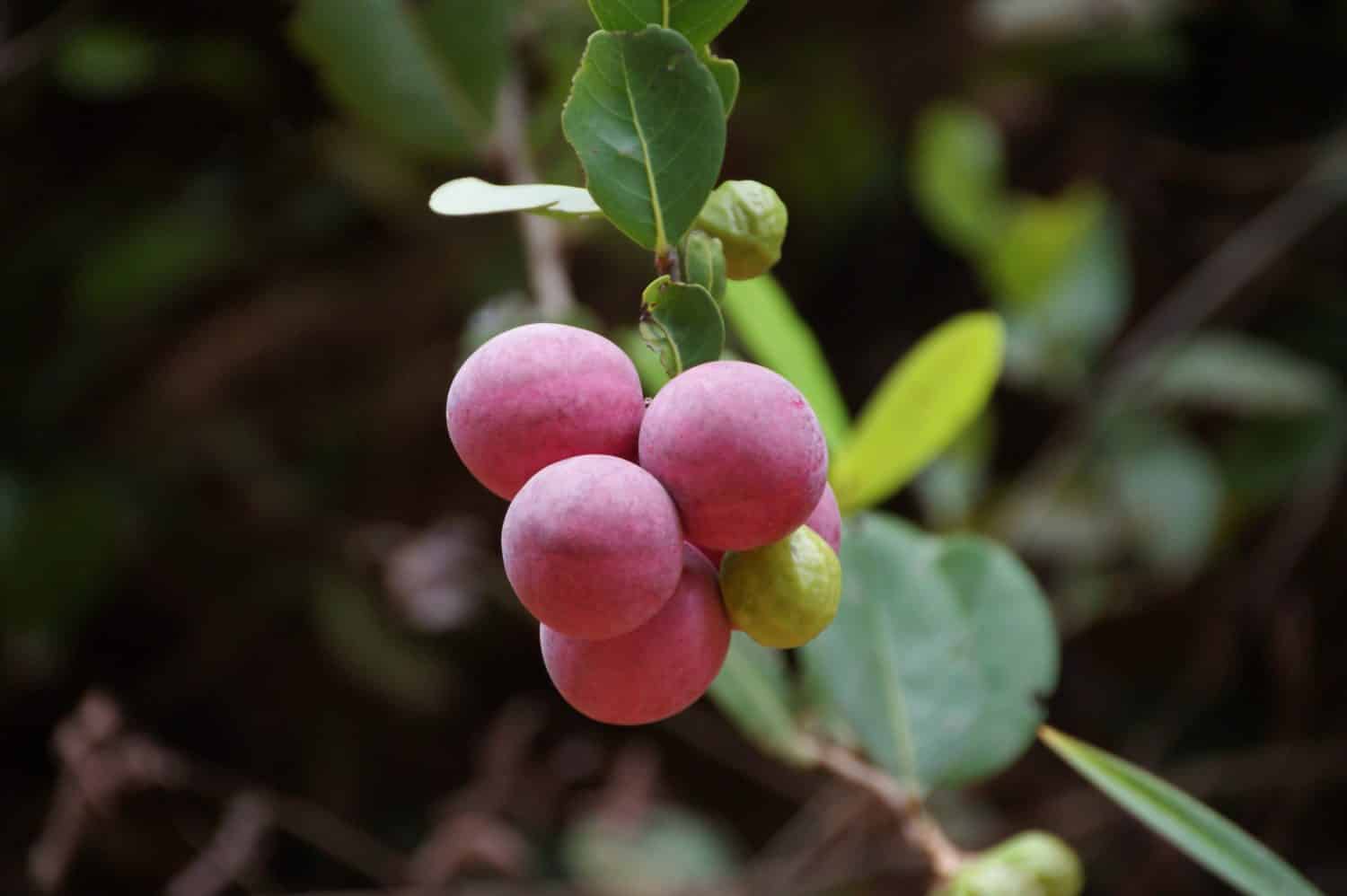
Paradise plums, also known as cocoplum or icaco, have a mild flavor.
©Natali22206/Shutterstock.com
Also known as cocoplum or paradise plum, icaco is the fruit of a shrub that grows in temperate coastal areas. Icaco is most prevalent in Africa but is also found in Central America and parts of Florida.
The fruit has a mild fruity taste that some consider bland. Some prefer to eat the seeds for extra texture and a nutty flavor. Icaco is often consumed raw or turned into jam for its anti-inflammatory properties in its native region.
Many Floridians plant cocoplums in their yard to attract birds and local wildlife. However, this hardy plant is considered invasive in some areas; check local regulations before planting your own!
Ice Cream

This delicious, sweet treat has a fascinating history.
©lovelypeace/Shutterstock.com
Ice cream is a well-known sweet treat with a murky past. Several countries claim credit for this delicious invention, and who can blame them? However, the exact origins are unclear.
Historians know that some versions of ice cream have been around since 4000 B.C. when mountain snow was blended with other ingredients as a treat. However, Italy gets the credit for its popularity and globalization, and the first recorded use of the word “ice cream” occurred in 1672. George Washington even had an ice cream maker in 1784.
Ice cream comes in hundreds of flavors, styles, and formulations. Regardless of its origins, this world-famous dessert has stood the test of time.
Iceberg Lettuce
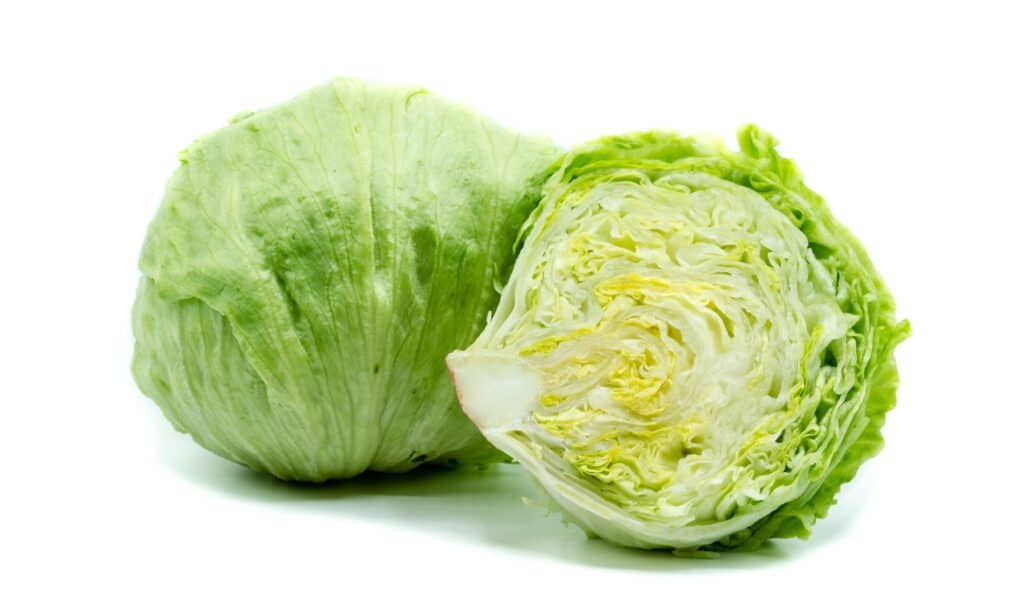
Iceberg lettuce was developed in the United States.
©iStock.com/Animaflora
W. Atlee Burpee & Co. developed iceberg lettuce in 1894, using French Crisphead lettuce as the parent plant. There are two working theories as to how it got its name. One highlights its resemblance to ice during transport, and another references the innovative use of ice during transport, which was a new technology at the time.
Iceberg lettuce is virtually flavorless, with a high water content and satisfying crunch. Its low caloric density and mild taste have contributed to its popularity in healthy eating and as the foundation of a flavorful salad—proof that dressing and bacon can make anything better. It’s one of several vegetables that begin with this letter.
Idared Apple
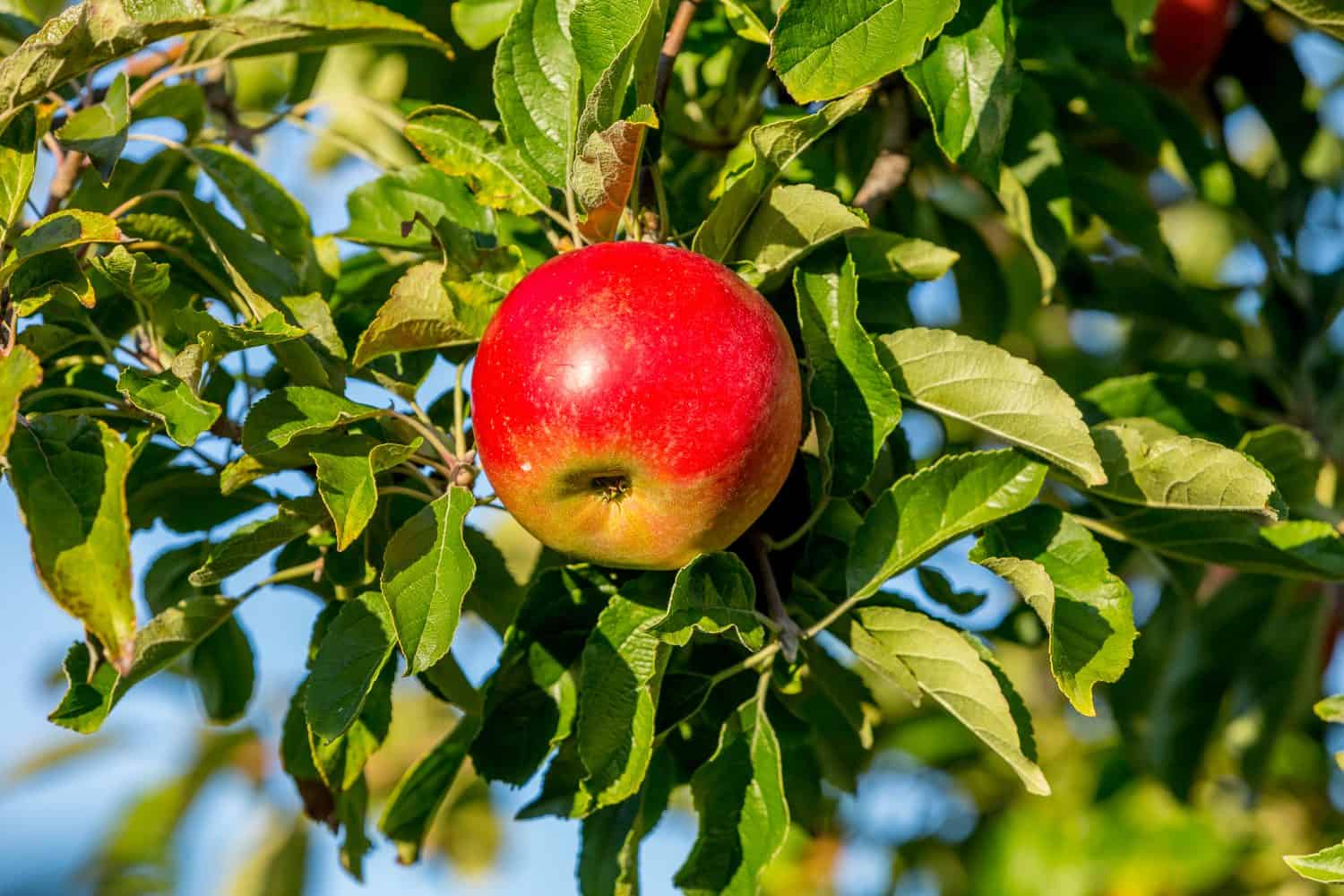
Idared apples are named for their home state: Idaho.
©Michael Dubenetsky/Shutterstock.com
Delicious Idared apples are known for their tart flavor and pleasing texture. This hybrid of Wagener and Jonathan apples was developed in and named after Idaho during the 1940s. Their dense texture is ideal for baked goods, as Idareds hold their structure well during cooking.
Idareds are early bloomers but late ripeners. Fortunately, these resilient apples hold their flavor well and can last for weeks when stored properly. Keep your Idareds in a perforated plastic bag in the crisper for best results.
Idiyappam

This delicious rice noodle dish is called Idiyappam.
©Santhosh Varghese/Shutterstock.com
Idiyappam is a type of rice noodle that’s popular in Southern India. It’s also known as string hopper, Puttu Mayam, and Putu Mayang. Historians date this noodle dish back to the first century, and it has simple, natural ingredients—rice flour, water, coconut, and salt—though recipes vary regionally.
This mild-flavored noodle is an excellent backdrop for curries and other flavorful sauces. Idiyappam is made with coconut milk, making it a great dish when combined with sweet elements at breakfast.
Idli

Idli has a mild, tangy flavor.
©Indian Food Images/Shutterstock.com
Like Idiyappam, Idli is a rice-based breakfast dish created and popularized in South Asia. It’s also served with chutneys, curries, and sauces but boasts a tangy flavor thanks to the fermentation process. Idli also has a soft, cake-like consistency.
The fermentation and steaming make Idli a healthy alternative to traditional rice. However, some people report gastrointestinal distress after consuming significant quantities. Keep this in mind when portioning out this delicious dish!
Igunaq

Cairn or meat cache structure near Baker Lake, Nunavut. Inuit people bury meat in a process called Igunaq.
©Sophia Granchinho/Shutterstock.com
Igunaq is an Inuit meat preservation technique that includes burying the meat to preserve it for later consumption, though the term is used interchangeably with the resulting dish. Walrus is one of the most popular types of Igunaq, though whales and other marine animals are sometimes substituted.
This fermented meat is often compared to blue cheese in flavor. Igunaq has been featured in the Canadian media recently as the Inuit people and food scientists work together to explore practical ways to eliminate the Trichinella parasite while preserving traditional food preparation methods.
Ikayaki

Ika is Japanese for squid.
©Princess_Anmitsu/Shutterstock.com
Ikayaki is a Japanese dish consisting of grilled squid. The word “ika” is Japanese for squid—you may also see ika tempura (calamari) on the menu at your local Japanese restaurant.
Ikayaki has a mild salty fish flavor but typically picks up the taste of the sauce it’s coated with when grilled. Overcooked ikayaki (and other squid dishes) has a rubbery texture; be mindful of your cooking time to get a tender, satisfying mouthfeel.
Ikura

Sushi fans may recognize Ikura as salmon roe.
©PAPA WOR/Shutterstock.com
Ikura, also known as salmon roe, is a popular Japanese dish served at many popular sushi restaurants. Biting into these bubble-like eggs produces a burst of briny, salty flavor that’s rich and slightly fishy.
This delectable dish is also rich in nutrients. Ikura has Omega-3s, iron, Vitamin B12, and Vitamin D. The burst of color is a stunning addition to a sushi platter, especially when wrapped in nori.
Imarti

Imarti is a sweet, delicious treat from India.
©Saravanan Ravichandran/Shutterstock.com
If deep-fried sweets and desserts are your favorite, you’ll love Imarti. These donut-like desserts are comprised of a thick lentil-based batter and piped artistically into oil to get their eye-catching design and shape.
Imarti is sweet and sugary, making it the perfect dessert and coffee pairing. These delightful desserts are often served at Diwali and other special events.
Imbe
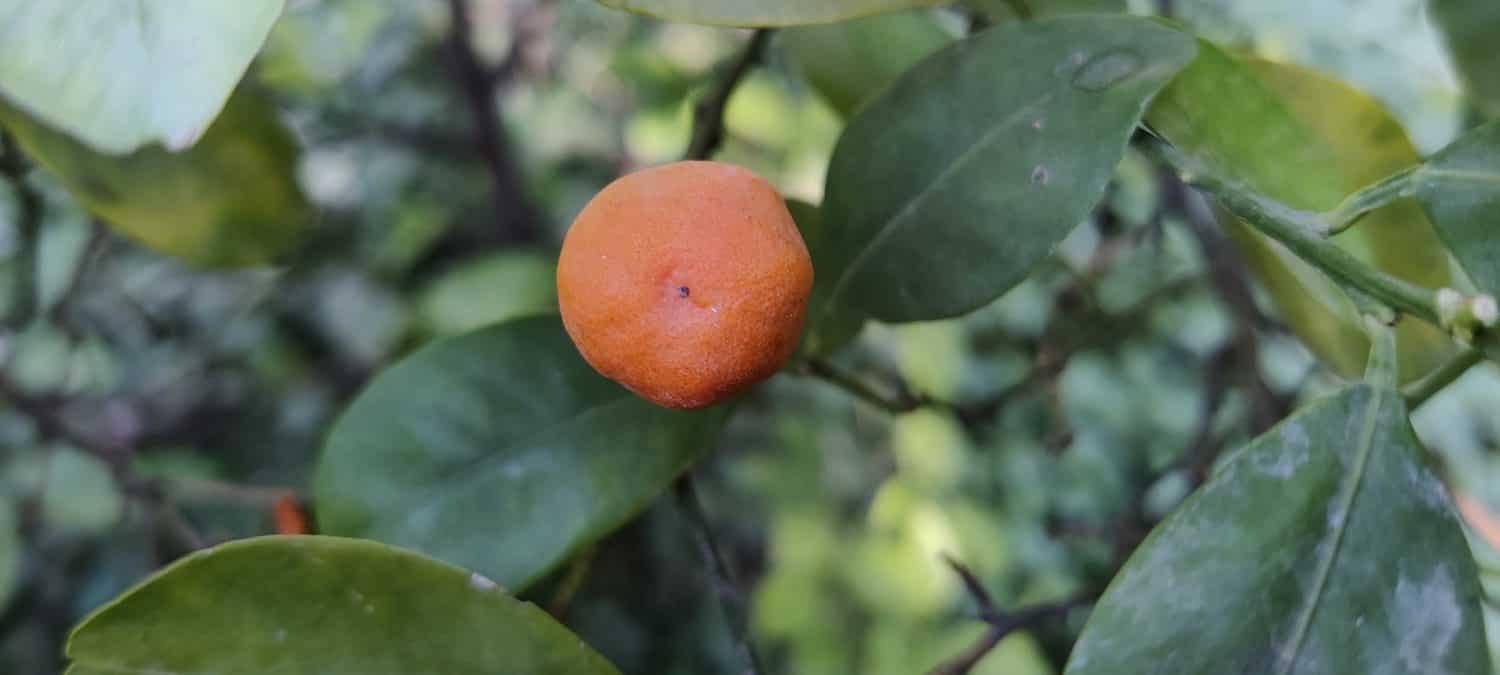
Imbe is a sweet, tangy citrus plant that grows in various African countries.
©Vipul1989/Shutterstock.com
Also known as the African Mangosteen, imbe is a sweet, orange citrus fruit that grows throughout Africa. Many compare the imbe’s flavor to apricot, boasting a nice balance between sweetness and tanginess.
You can peel and eat imbe raw for a nutritious snack or add it to a smoothie. Use the rinds to brighten your baked goods or make a soothing tea!
Imperial Mandarin

Mandarin ‘Imperial’ is known for its early ripening.
©agung n. wibowo/Shutterstock.com
Imperial mandarins pay homage to their Chinese roots. Historians have labeled Mandarin as a loanword (a foreign language word used as-is rather than translated) from China, initially adopted by France to describe this delicious fruit. Imperial mandarins are a favored cultivar with quick ripening habits.
Mandarins have a sweet, citrusy flavor with an element of spice. They can be eaten raw, added to smoothies, or added to salads for extra flavor and color.
Inca Berries
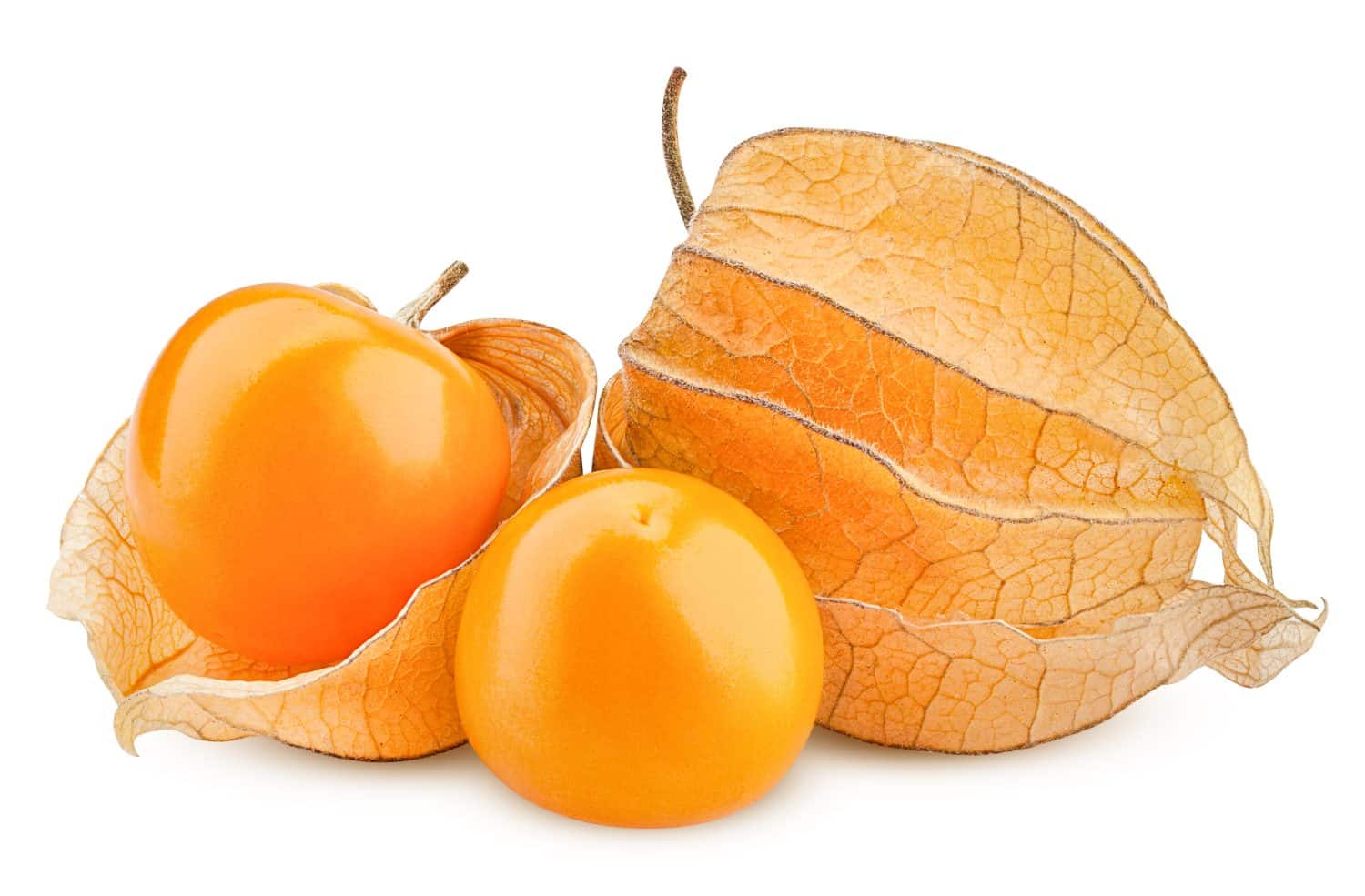
You may also know Inca berries as Peruvian ground cherries.
©grey_and/Shutterstock.com
The Inca berry is a unique fruit that goes by Peruvian ground cherry and cape gooseberry. These tart, juicy berries grow in a paper-like husk, similar to Alkekengi (paper lantern fruit). The berries are incredibly flavorful, making them a great addition to salads and baked goods.
As an alternative to fresh Inca berries, you can also purchase pre-packaged, dried versions. These are great as a standalone snack or added to trail mix and granola.
Indigo Rose Tomato
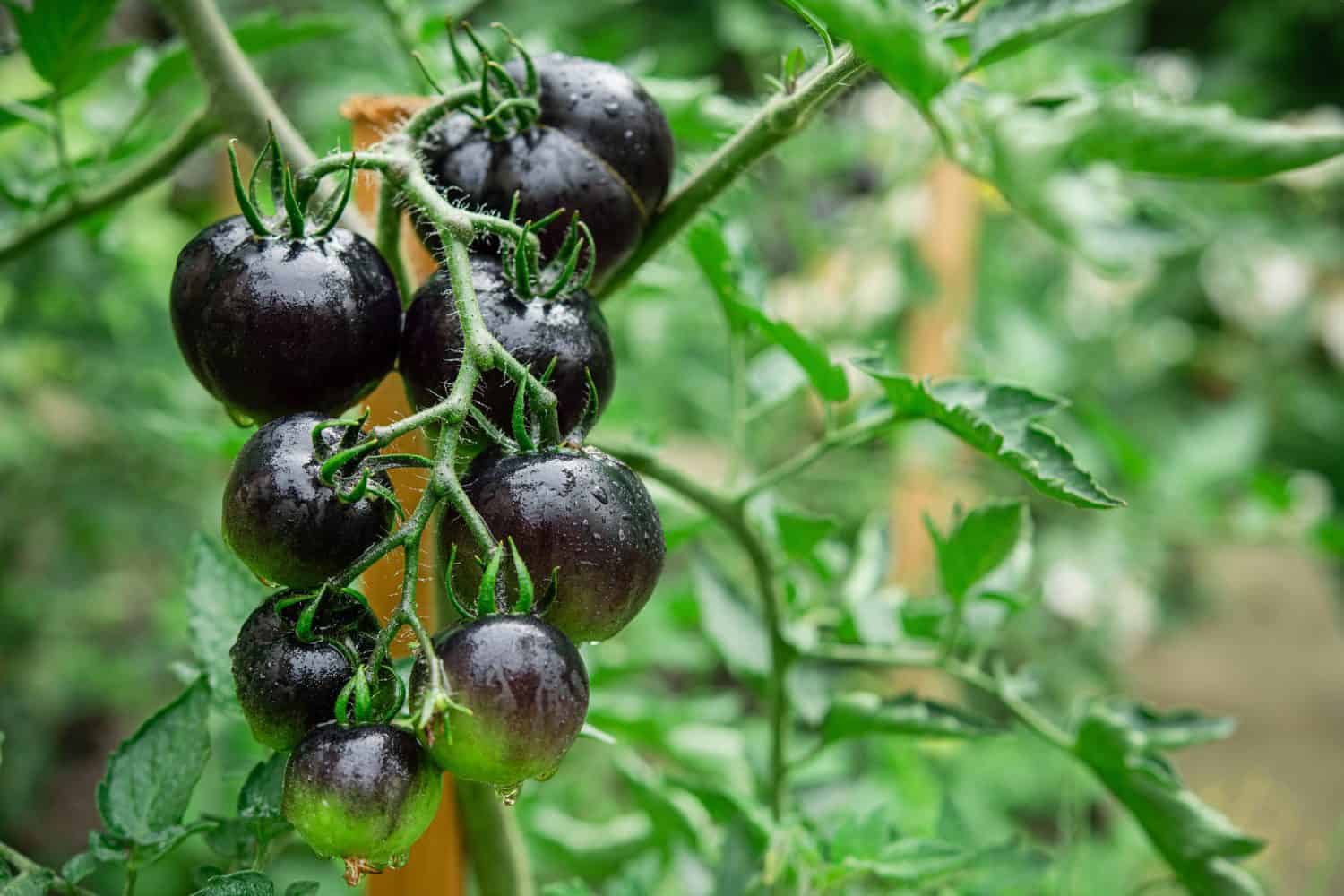
The unique purple-black shade makes Indigo Rose tomatoes an eye-catching vegetable.
©Dima Sobko/Shutterstock.com
Solanum lycopersicum, known colloquially as the Indigo Rose tomato, is recognizable by its deep purple-black shade. These medium-sized tomatoes have a mild texture that leans toward tartness. These tomatoes were developed at Oregon State University and have a high level of anthocyanin—the antioxidant that makes blueberries so healthy!
Indigo Rose tomatoes taste great when added to salads or as a spooky addition to a Halloween-themed dinner or event.
Ingram Apple
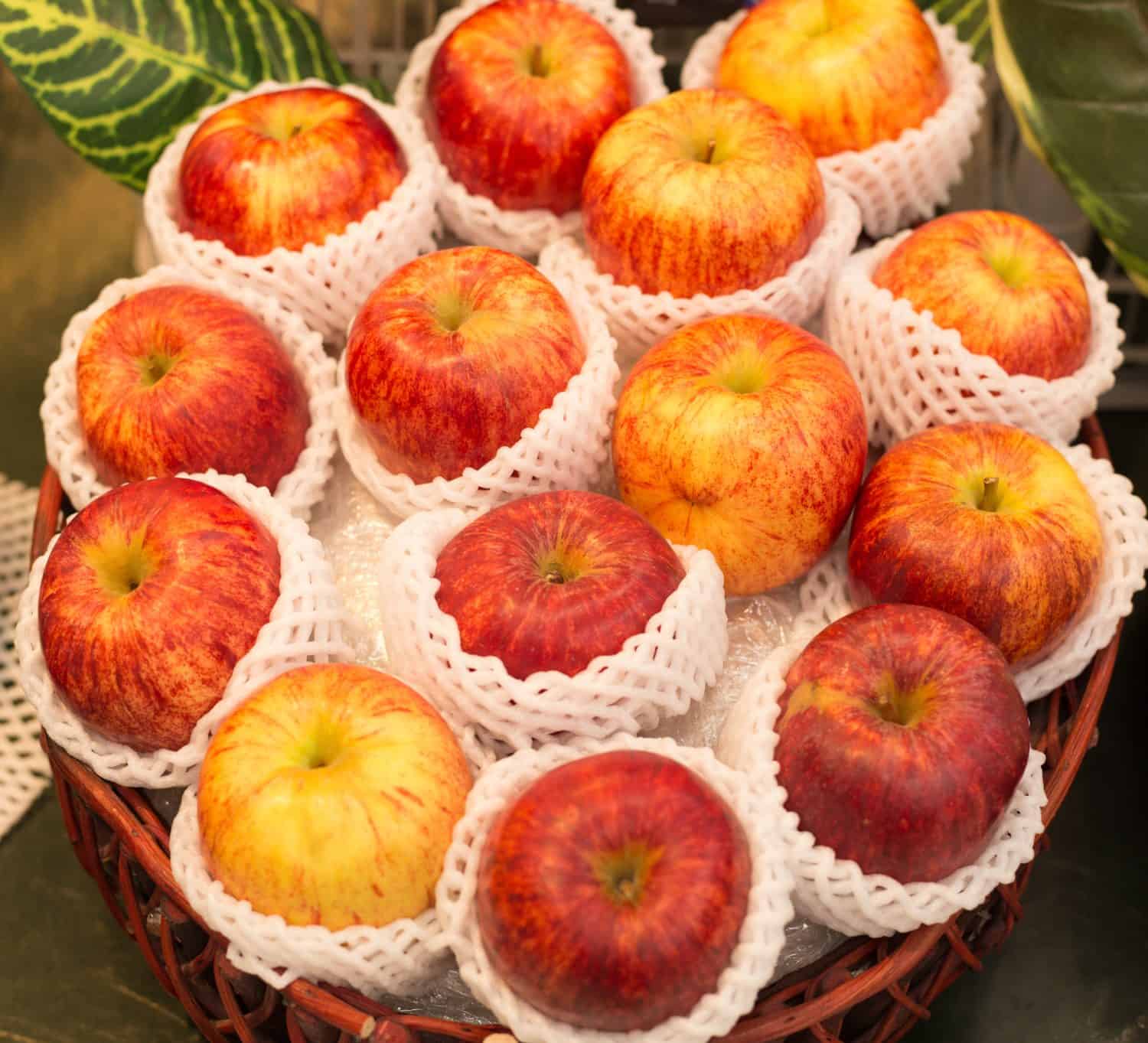
Ingram apples are now quite rare. They have deep red markings on a red backdrop like these.
©BOATFOTO/Shutterstock.com
If you’ve never heard of Ingram apples, you’re not alone. These heirloom apples were once a hot commodity, reaching peak popularity 100 years ago. This apple is dense and crunchy, with a sweet, acidic taste. It’s recognizable by deep red russetting on a lighter red background. You may find these apples at an heirloom orchard or farmers’ market; they’re uncommon in most grocery stores.
Ingram apple trees have a notably high yield, making them a great addition to your yard. Many Ingram growers take advantage of the acidity and long lifespan to make cider to celebrate the fall harvest.
Injera
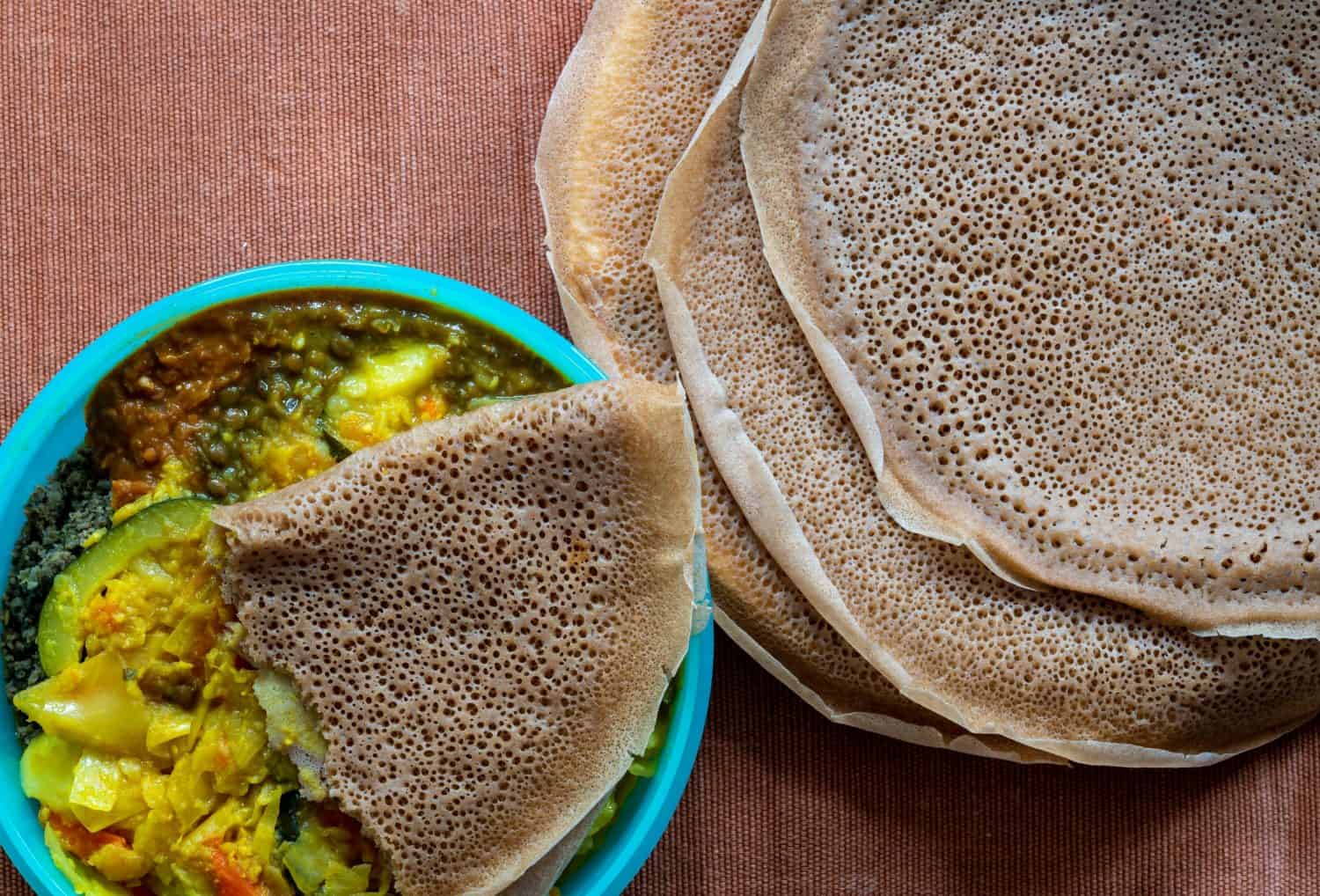
Injera is an Ethiopian fermented bread.
©Milos Ruzicka/Shutterstock.com
This simple Ethiopian dish is a fermented bread comprised of flour and water, which is left to ferment—comparable to a sourdough pancake. Teff flour is the optimal ingredient for Injera. However, this grain crop can be difficult to produce, leaving many families to use or substitute teff with other flours.
Injera has a notable tang and sour taste, which balances bland lentils or spicy meat dishes. It’s often served as a side with a meal and helps promote gut health thanks to its healthy bacteria content.
Italian Wedding Soup

Italian wedding soup is a marriage of delicious ingredients.
©Brent Hofacker/Shutterstock.com
There’s a common misconception that this iconic soup is related to Italian wedding ceremonies. This belief stems from mistranslating the original name Minestra Maritata—marriage soup. The “marriage,” in this case, refers to the blending of several flavors and textures to create a delicious dish.
Italian wedding soup typically includes greens, meatballs, vegetables, and pasta. However, the recipe varies regionally in Italy and Italian homes in the United States. The result is a rich and hearty soup that pairs well with crusty bread—Italian or otherwise.
Ivy Gourd
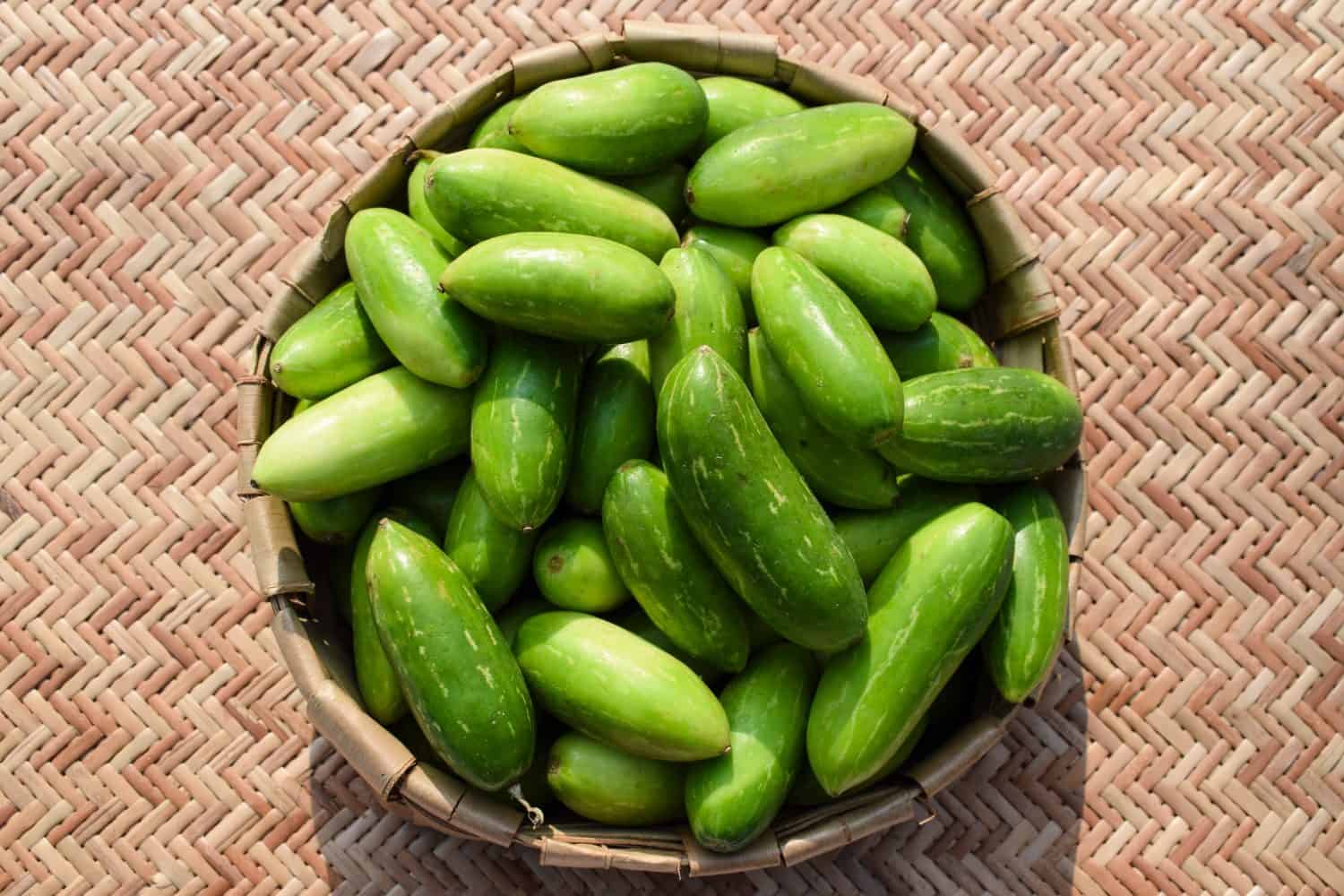
Also known as the Tindora, ivy gourds are a tropical vegetable.
©Rainbow_dazzle/Shutterstock.com
Ivy gourds are technically a fruit related to eggplant, zucchini, and squash, though they’re treated and consumed like vegetables. These nutritious gourds grow in India and other parts of South Asia and go by the names scarlet gourd (based on its taxonomic family), Tindora, and Rashmato.
The ivy gourd is slightly bitter and vegetal. While it can be consumed raw, it’s best when added to stir-fries and pasta.
| Foods That Start With I | Origin |
|---|---|
| Iberico Ham | Portugal; Spain |
| Icaco | Africa; Central America |
| Ice Cream | China; Italy |
| Iceberg Lettuce | United States |
| Idared Apple | United States |
| Idiyappam | India; Sri Lanka |
| Idli | India; Sri Lanka |
| Igunaq | Canada; Greenland |
| Ikayaki | Japan |
| Ikura | Japan |
| Imarti | India |
| Imbe | South Africa; Somalia |
| Imperial Mandarin | China |
| Inca Berries | Peru; Chile |
| Indigo Rose Tomato | United States |
| Ingram Apple | United States |
| Injera | Ethiopia |
| Italian Wedding Soup | Italy |
| Ivy Gourd | South Asia |
The photo featured at the top of this post is © Milos Ruzicka/Shutterstock.com
Thank you for reading! Have some feedback for us? Contact the AZ Animals editorial team.






